
views
Putting Hamsters in the Same Cage
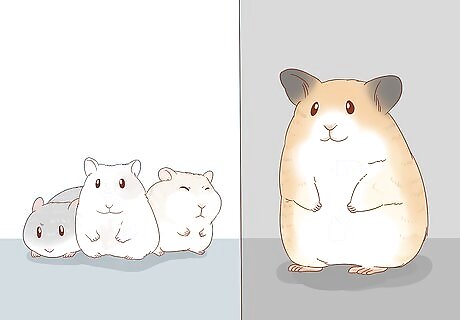
Know your species. Only certain hamsters should be kept in a cage together. Dwarf hamsters, which include Russian, Chinese, and Djungarian hamsters, are very social and enjoy the company of a friend. Syrian hamsters and other large breeds, though, prefer to live alone. Most pet stores sell dwarf hamsters. If you are unsure of your fuzzy friends’ particular breed, contact the store or breeder where you got them to ask.
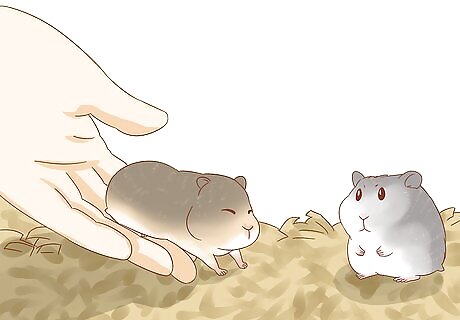
Start young. Hamsters form strong bonds with the people and animals around them. They don’t like intruders invading their established social groups. Introduce cage mates while they are young and before they have the chance to bond too much with you and your family. Ideally, this should be before they reach two months old. This way, they will socialize and bond with each other, as well. Hamsters from the same litter get along best. Ask the pet store or breeder where you get your hamsters about whether or not your intended pair shares the same parents.
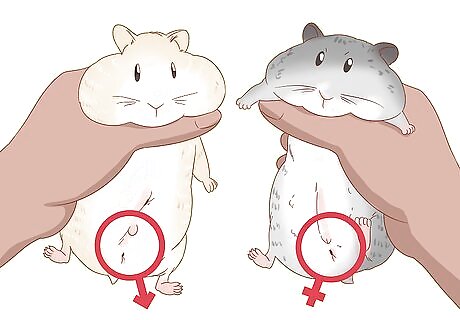
Check their sex. Unless you want a bunch of little hamsters, try to keep only same-sex pairs in a cage. Look on your hamster’s belly to determine the sex. In males, the sex organs and the anus are further apart, whereas in females they are very close together. Males also have large, prominent scent glands in the middle of their stomachs and testicles between their back legs. You may ask a vet or breeder to double check the sex. Do not rely on pet store employees, though. They often have little to no training in this area.

Limit a cage to a single hamster pair. Even social hamsters don’t do well in a crowd. Too many hamsters in a cage increases the chances of disagreement, which can turn violent or even deadly. To avoid harmful disagreements, limit the number of hamsters in a single cage to no more than two. If you have more than two hamsters, consider separating them up into multiple pairs. Then, get a separate cage for each pair. This gives your hamsters the best chance of getting along.

Put two of everything in the cage. Hamsters can get aggressive when they think they need to compete for resources. To prevent this, get a large cage and equip it with two of everything, including food and water dishes, exercise wheels, sleeping areas, and any other toys or accessories. Each hamster needs to know that they have their own set of stuff. Ideally, you want a cage that offers your hamsters a minimum of two square feet (0.18 square meters), though a larger cage is preferable if you have the space.

Watch them carefully. Introduce your hamsters on a day when you will be home to observe them. Start them on opposite sides of the cage and let them come to each other. If you notice your hamsters fighting, or if one bullies and injures the other, they will need to be separated immediately and permanently. There is no guarantee that a hamster introduction will be successful long term. You should check on your hamsters at regular intervals every day.
Housing Hamsters in Separate Cages

Check for signs that one of your hamsters is panicked. If you are currently housing two hamsters together but think they need to be separated, first check for panic. Visible injuries are the most obvious sign that there is a problem, but other indicators could include: Rapid weight loss. One hamster hiding while the other eats. Excessive squealing. A hamster that is jumpy when handled.
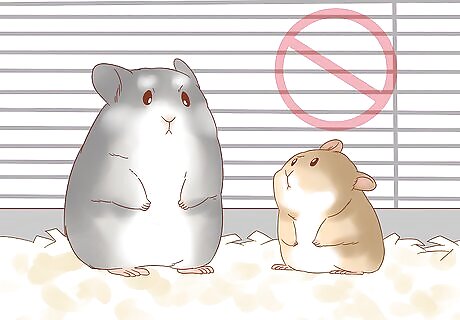
Separate different species. Syrian and dwarf hamsters should not be kept together in the same cage under any circumstances. If you have different hamster species, separate them into different cages, or one species will become dominant and act as a threat to the other hamsters. Different species can be kept close together, just not in the same cage. Syrian hamsters are often curious about neighbor dwarf hamsters. As long as they do not feel their territory is threatened, they do not typically mind their cage set directly next to another species.

Get secure cages. Whether you are separating fighting hamsters or starting off multiple hamsters in separate cages, you need to research your habitats thoroughly. Even cages made specifically for small pets can be easy to break out of for some hamsters. Read reviews to check for security features such as latches and tightly spaced bars, and check with other hamster owners for recommendations. More territorial species may be inclined to try to get to other hamster’s possessions, even when they are separated by their habitats.
Caring for Hamster Parents and Babies
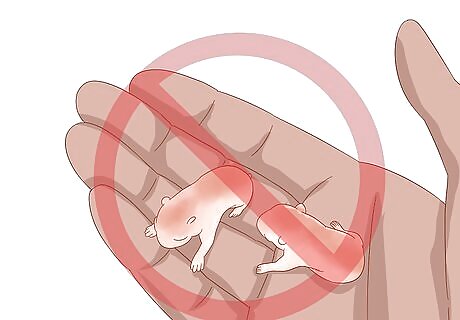
Avoid handling the babies. Handling newborn hamsters can leave your scent behind on the babies. If this happens, their mother may become confused and abandon her litter. This could lead to starvation, or to the mother turning aggressive toward her babies later on. To avoid this, avoid handling the baby hamsters unless absolutely necessary until they are about three weeks old.
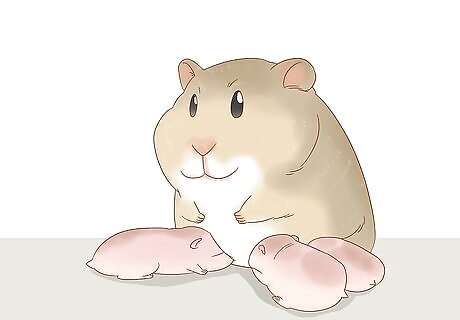
Watch the mother carefully. Typically, mother hamsters have an instinct that makes them naturally inclined to care for their babies. However, some mothers will abandon their litter for seemingly no reason. If you notice a mother ignoring her newborns, contact a vet immediately. You may have to begin the hand-raising process. Hand raising hamsters is a difficult task that should only be undertaken under the supervision of a vet. Talk to a vet about if hand raising is the right approach. If it is, get their recommendations regarding food formulas and equipment for the newborns.
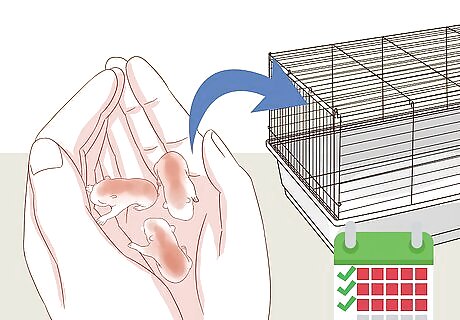
Move the babies at three to four weeks old. Once the newborn hamsters have reached 21 to 28 days old, their mother will begin to chase them out. To keep the newborn hamsters safe, remove them and put them in their own cages either individually or as pairs. Remember to separate them by sex to avoid any more hamster babies. Note that hamsters become sexually mature and can reproduce from around 6 weeks of age on.


















Comments
0 comment